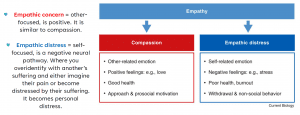Wrap-up: Northern Sydney Regional Forum, June 2022
Written by Lauranne Beernaert, Sector Support Coordinator
Our recent Northern Sydney Regional Forum focused on the Aged Care workforce, as we recognise that acute workforce issues across the Sector remain a key challenge today and into the future.
Based on a recent report by CEDA (Duty of Care: Aged Care Sector in Crisis) projections for the Sector had to be revisited due to skills shortages and challenging circumstances:
- 1 in 5 people plan to quit Aged Care in 2023
- 30,000 to 35,000 new direct care workers needed each year
- 110,000 aged care workers are needed to meet demand in 10 years
We invited a diverse group of speakers to provide insights and ideas on how to address this challenge as we know that we need a collective response. Our Forum saw a range of experts coming from the Aged Care Workforce Industry Council (ACWIC), Employment Services (MatchWorks), Training (TAFE NSW), Strategy (Bendelta), and two informative sessions about Skills Brokers NSW and the Home Care Workforce Support Program.
Top Five Tips
- Start planning for your workforce NOW. There are many quality tools that have been developed for the Sector that can support this process, such as this Workforce Narrative with key insights to make evidence-led workforce planning decisions, and this recently launched free Aged Care Workforce Planning Tool. It is estimated that a 14-month period is required for a new Aged Care worker to be fully operational (see below timeline).
- Connect with Employment Services who can connect you with job seekers. Remember that the right balance needs to be found between hiring someone with the right skillset but also with the right personal values, which may take some time. Service providers may have access to government wage subsidies to assist with onboarding, and funded recruitment services are accessible at no cost. Note that Workforce Australia will become the front door for government employment and skills services from 4 July 2022.
- Collaborate with TAFE (or other Registered Training Organisation): they are able to provide customized and flexible training for your staff, and can offer many Government funded short courses (e.g. Statements in Attainment, Certificates III and IV) and traineeships. Check this successful partnership between Warrigal and their local TAFE: TAFE Enterprise Example, Case Study. Another example by Allambi Care here.
- Design a quality supervision program as a staff retention strategy. While working in aged care is purposeful and rewarding, it is also fertile ground for burnout.
Without a conduit to process challenges and trauma, people will leave.
Reflective supervision transforms empathic distress into a positive feeling:

Integrating reflective supervision into your organisation may require some creative thinking because Aged Care staff are time-poor. This may involve using technology.
- Upskill your staff via NSW JobTrainer, as many courses are fee-free. Eligibility for training has now been extended to currently employed workers in certain sectors. Take advantage of this opportunity to work with your teams and assess where their skill gaps are. Enrolments are extended until 31 December 2022.
For your convenience, we have prepared this 1-page summary of Aged Care Workforce initiatives in Australia and NSW.
Replenishing the Aged Care workforce: a 14-month timeline
To become an Aged Care worker (home care), there is an estimated 14-month timeline to reliably train someone to fully independent worker, assuming the following:
- Able to pass requisite training with a good level of literacy
- Has own reliable vehicle
- Able to secure work quickly and pass all required worker checks
- Can demonstrate skills such as empathy, professional boundaries, and exercise sound judgement in areas such as assessing the physical and psychological condition of a person.
- Can model social skills, respect, is able to follow direction and be flexible when circumstances change
- At 6 months of employment, the individual is competent in their role.
Timeline:
| Time | 5 – 10 days | 6 months | 1 month | 1 week | 2 weeks | 6 months |
| Processes & Tasks | Pre-Employment Preparation | Certificate III Aged Care/Individual Support | Job search
| Worker checks:
| Induction Program which would include training modules such as:
| Complete probation |
| Stakeholders | Workforce Australia | RTO | Candidate | Employer | Employer/Employee | Employee/Employer |
Some final thoughts
“After any pandemic, there is a renaissance”, Forum participant.
Speakers and Forum participants alike agreed that while the workforce challenge was significant, COVID-19 forced many to question who we are, our purpose and what we want to contribute. Recruitment strategies focused on personal values and attributes could yield best results, as explained in this article by HSSO.
Many people are looking for a career change and we can take advantage of this, as illustrated in ACWIC’s recent Bring Your Thing campaigns. How is your organisation contributing to reframing the narrative about Aged Care?
Reference
Committee for Economic Development in Australia. (2022). Duty of Care: Aged Care Sector in Crisis. Accessed on https://cedakenticomedia.blob.core.windows.net/cedamediacontainer/kentico/media/attachments/duty-of-care-aged-care-sector-in-crisis.pdf